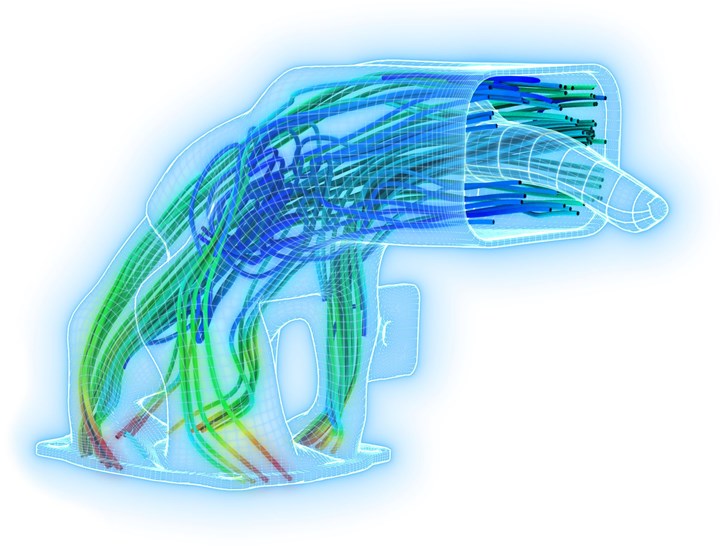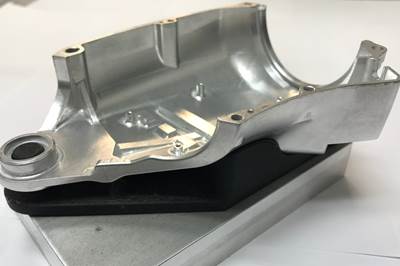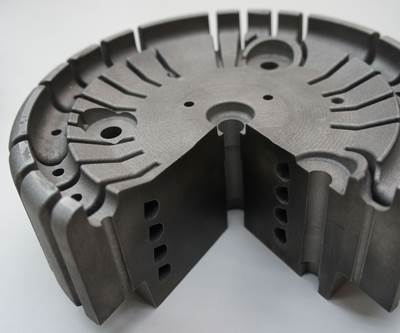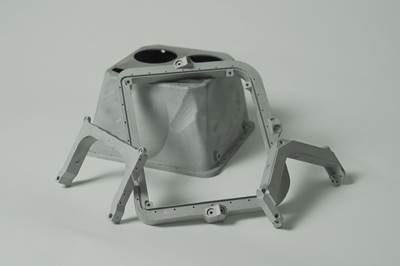Share










“[I]f you think of dropping a leaf in a stream, sometimes it's going to rocket down that stream if it's in the right path, and it's going to go really fast. Other times, it may get swallowed up in the vortex over on the side somewhere,” says Ashley Eckhoff, additive manufacturing program team member at Siemens Digital Industries Software.
When it comes to fluid flow, a designer’s instinct might be to create plenty of space, to lay out a wide “stream” for the hypothetical “leaf” to travel through. But a wide-open space isn’t necessarily conducive to efficient fluid flow, Eckhoff says. Too much space creates more opportunities for those vortexes to form, causing the fluid to double back on itself and waste energy.
But until the advent of simulation software, designers had no real way of seeing this. Many of the “streams” in the physical world are actually too large, too inefficient and require more power to operate than necessary as a result. For an example, look no further than the so-called “Mighty Duct.”

Nicknamed the “Mighty Duct,” the component to the right is a new version of an air duct for the Multi Jet Fusion (MJF) 3D printing platform that was redesigned using computational fluid dynamics. Both this duct and its previous version (left) are 3D printed using MJF. Images: Siemens
This air duct is a component for HP’s Multi Jet Fusion (MJF) polymer 3D printer. The nylon part is a piece of the ductwork that delivers air to the printhead, keeping it cool during operation. Until recently, this air duct had a fairly conventional shape derived from an earlier design intended for injection molding.
But when HP teamed up with Siemens, collaborators saw this air duct as a design opportunity. Simulating the airflow through Siemens’ Star CCM+ computational fluid dynamics software revealed that the air wasn’t utilizing all the space allotted in the original design; rather, it followed four distinct pathways through the duct’s main turn.

Computational fluid dynamics (CFD) software from Siemens revealed that the air wasn’t utilizing all the space inside the original duct design. A new, 3D printable version eliminates the unused space and funnels air through the four most efficient pathways instead.
Eckhoff and his team used the CFD data as the basis for a new design, one that eliminates wasted space and instead directs the volume of air through the pathways it naturally wants to follow. The resulting air duct is unlike any previous, human-driven design and would be impossible to manufacture without 3D printing. Its complexity delivers significant performance advantages — HP reports that the new design delivers a 22% improvement in efficiency. While the rest of the cooling system remains the same for now, efficiency gains like those delivered by the Mighty Duct could lead to other improvements in the future, like a smaller fan and reduced energy needed to move air through the system.
Air flow efficiency wasn’t the only win from this project, however. Peter Zelinski and I sat down with Eckhoff and Luis Baldez, head of strategic initiatives at HP, in a recent episode of The Cool Parts Show to learn how the Mighty Duct also showcases assembly consolidation, rapid design iteration, reduced manufacturing lead times and more. The episode was originally broadcast live through the IMTS spark platform; view an edited version here:
For more 3D printing wins, find additional episodes at TheCoolPartsShow.com. Have a neat 3D printed part to share? Consider entering The Cool Parts Showcase!
Related Content
JTEKT Technology Days Showcases Synergies
The event took place following the company’s completion of its new showroom and decision to merge several of its brands under the JTEKT name.
Read MoreHow to Meet Aerospace’s Material Challenges and More at IMTS
Succeeding in aerospace manufacturing requires high-performing processes paired with high-performance machine tools. IMTS can help you find both.
Read MoreThe Benefits of Vertically Integrating Metal 3D Printing and Machining
Having 3D printing and machining within one organization enables Addman’s engineers to collaborate and consolidate so it can quickly make successful metal 3D printed parts.
Read MoreChuck Jaws Achieve 77% Weight Reduction Through 3D Printing
Alpha Precision Group (APG) has developed an innovative workholding design for faster spindle speeds through sinter-based additive manufacturing.
Read MoreRead Next
Five 3D Printing Trends Mirrored in Machining
The underlying drivers of additive manufacturing’s advance are increasingly easy to spot on automated CNC machine shop floors.
Read MoreMoldmaking Water-Flow Simulation Makes 3D-Printing Practical
Virtual prove-outs prove the worth of stirring things up, both within the cooling channels of individual molds and in the plastics industry at large.
Read MoreMeet the 3D Printed Parts That Are on Their Way to Mars
Five components of a critical instrument were made via electron beam melting, a technique able to deliver the hollow box beams and thin walls. But 3D printing was just the first step.
Read More

.jpg;width=70;height=70;mode=crop)








.png;maxWidth=150)





































